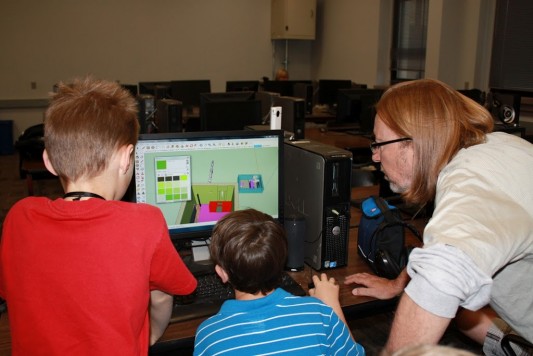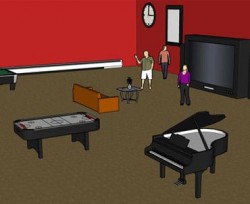Project Spectrum brings together Google SketchUp users and autistic students; “we provided a platform for their talents to shine.”
Autism is a bewildering complex of symptoms that affect people’s social interactions and communication. In its most extreme, and heartbreaking manifestations, it impairs the ability to communicate with the people who love them and see them professionally. One of the big challenges in education today is effectively reaching children on the autism spectrum. One of the few generalities about people with autism is that they are unusually strong visual and spatial thinkers. Several years ago the team behind Google SketchUp started receiving calls and emails from parents of autistic children; they had introduced their children to SketchUp and were astounded by the results.

For some autistic children, especially the nonverbal, SketchUp serves as a way to communicate, allowing them to share their thoughts through images. The ability to express themselves helps some autistic children learn life skills, and help them achieve previously unobtainable educational and career goals.

The SketchUp product team has always worked closely with education, but in the early years it was mostly with higher education, not K-12. Since being acquired by Google in 2006 SketchUp has also started to work with K-12, and when the leads about autism started coming in, SketchUp decided it was a path worth pursuing. In cooperation with researchers at the University of Utah and the Autism Society of Boulder County SketchUp launched Project Spectrum to connect the autism community with SketchUp.
The U of U team, led by Cheryl Wright, Associate Professor in Family & Consumer Studies, has hosted several SketchUp camps, called Project iSTAR, for dozens of children with autism. A link to a short video on the program is at the end of this article, along with one prepared by Google SketchUp about Project Spectrum.
Wright’s team studied hundreds of hours of video of iSTAR campers, and January 2012 they published a paper in the Family & Consumer Sciences Research Journal outlining their findings. While the camp set out to develop a skill set that could lead to potential employment, the researchers found several added benefits, such as stronger interpersonal relationships and greater confidence due, in large part, to a focus on the kids’ talents instead of their disorder. Wright says, “[The campers] talents are often invisible. In our program, we provided a platform for their talents to shine.”

Tom Wyman, manager of business development at Google SketchUp, has worked on Project Spectrum. “Ultimately, what we hope is that the work that iSTAR is doing is creating a template other communities can replicate across the country and across the world. The data will motivate people to do this.”
Kathy Gilmour, director of special education at Salt Lake City’s charter school Open Classroom, worked in one of the iSTAR camps. She says students’ greatest growth came as they worked in teams and asked for help from each other. “They are now the experts. And that’s a huge impact in the way we think about [autistic] kids.”
A video about the iSTAR project:
A video about Google SketchUp Project Spectrum:





